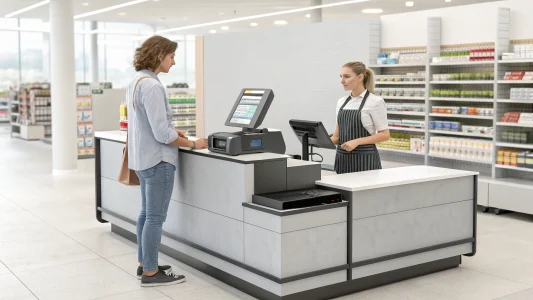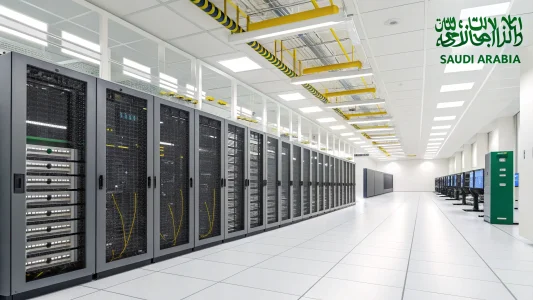Table of Contents
ToggleThe High-Yield Alternative
High-yield savings accounts function similarly to traditional savings accounts but offer significantly better interest rates. These accounts are typically offered by online banks that operate with lower overhead costs due to their lack of physical branches. The money saved on facilities and staff allows these institutions to pass higher interest rates to customers.
Safety remains a priority with these accounts. Reputable high-yield savings accounts are FDIC insured, meaning deposits up to $250,000 per account are protected by the federal government – the same protection offered by traditional banks.
The interest rates on high-yield accounts fluctuate based on market conditions and Federal Reserve decisions. While current rates around 4-5% are attractive, they will adjust as economic conditions change. Nevertheless, these accounts consistently outperform traditional savings accounts regardless of market conditions.
Top Options for Different Needs
For those seeking the absolute highest interest rate with minimal concern for additional features, My Banking Direct currently offers an impressive 5.35% APY. With this rate, $10,000 would earn $535 annually. The account requires a minimum deposit of $500, but any balance over $1 will earn the advertised yield.
Customers who prefer working with established names might consider high-yield options from American Express, Capital One, or Discover, which offer around 4.25% APY. PNC Bank currently provides a competitive 4.65% yield.
For a balance of competitive rates and useful features, SoFi stands out with its current 4.6% yield. SoFi offers “vaults” that allow users to organize savings into different categories while maintaining the same interest rate across all funds. They also provide cash sign-up bonuses of up to $325 for new accounts with qualifying direct deposits.
Important Considerations
Before switching to a high-yield savings account, consumers should understand several key factors:
- Interest rates are variable and will change over time as market conditions shift
- Some accounts advertise high rates but impose minimum balance requirements to earn those rates
- Interest is typically compounded daily but paid monthly
- Some accounts require direct deposits or other activity to maintain the highest rates
- High-yield accounts are ideal for emergency funds and short-term savings goals, not long-term wealth building
While the current high rates are attractive, they should not replace long-term investment strategies. The stock market, particularly index funds like those tracking the S&P 500, has historically provided higher returns over extended periods.
The Psychology Behind Banking Inertia
The most significant barrier preventing Americans from capturing hundreds of dollars in additional interest isn’t technical complexity or lack of available options – it’s psychological inertia. Financial institutions have spent decades cultivating customer loyalty through convenience, familiar branch locations, and integrated services that create an illusion of necessity. This psychological anchoring explains why millions of Americans continue losing money in low-yield accounts despite having access to dramatically better alternatives.
Research from behavioral economics demonstrates that people systematically undervalue future gains when compared to present convenience. The mental effort required to research, compare, and switch accounts feels disproportionately burdensome compared to the seemingly abstract benefit of earning higher interest. This cognitive bias, known as present bias, costs the average American household approximately $400 annually in foregone interest earnings.
Understanding this psychological trap is the first step toward overcoming it. The switching process typically requires less than 30 minutes of actual work, making the effective hourly rate for this task over $800 per hour for someone with $10,000 in savings. Framing the decision in these terms helps overcome the natural tendency to procrastinate on financial optimization.
Strategic Account Management
Successfully maximizing returns from high-yield savings requires more than simply opening a single account. Advanced savers employ a multi-account strategy that optimizes for different financial goals while maintaining liquidity and earning maximum interest.
The foundation of this approach involves establishing a primary high-yield account for emergency funds, typically containing three to six months of living expenses. This account should prioritize stability and consistent access over chasing the absolute highest rates. Established online banks like Marcus by Goldman Sachs or Ally Bank often provide the best combination of competitive rates and reliable service for this core holding.
Beyond the emergency fund, strategic savers create specialized accounts for specific goals. Short-term objectives like vacation savings, home down payments, or major purchases benefit from separate high-yield accounts that can be mentally earmarked for their intended purpose. Some banks, including SoFi and Ally, offer built-in goal-setting features that automatically allocate funds while maintaining unified high interest rates across all savings categories.
The most sophisticated approach involves rate optimization through account laddering. This strategy involves opening accounts with multiple institutions and transferring funds to the one that offers the highest current interest rate. While this requires more active management, the additional earnings can be substantial. Rate-chasing typically makes sense for amounts exceeding $25,000, where even small percentage differences translate to meaningful dollar amounts.
Automation and Systematic Savings
High-yield accounts become most effective when integrated into a systematic savings routine. Automatic transfers from checking accounts ensure consistent savings habits while maximizing the time money is spent earning higher interest rates. The key is establishing transfers that occur immediately after paycheck deposits, capturing money before discretionary spending can interfere.
Many successful savers implement the “pay yourself first” principle by treating savings transfers like mandatory bills. Setting up automatic transfers of $500-1,000 immediately following each paycheck deposit ensures steady account growth while taking advantage of compound interest over time. Even small amounts benefit from this approach – $100 monthly transfers to a 4.5% account will grow to over $6,300 after five years, compared to just $6,000 in a non-interest-bearing account.
Advanced automation involves coordinating multiple accounts to optimize interest earnings throughout each month. Some savers maintain minimal checking account balances and transfer larger amounts to high-yield accounts, then transfer money back as needed for expenses. This approach maximizes the time funds spend in higher-earning accounts while maintaining necessary liquidity for regular expenses.
Tax Implications and Optimization
Higher interest earnings create tax obligations that traditional savings account holders rarely encounter. Interest income from high-yield accounts is taxed as ordinary income, meaning earnings are subject to your marginal tax rate. For someone in the 22% tax bracket earning $460 annually from a high-yield account, the after-tax benefit is approximately $359 – still significantly better than traditional savings, but crucial for accurate financial planning.
Strategic savers can optimize their tax situation through several approaches. Contributing to tax-advantaged retirement accounts, such as IRAs, reduces current-year taxable income, potentially lowering the effective tax rate on savings account interest. Additionally, timing large deposits to occur early in the tax year maximizes the pre-tax earning period.
For higher-income individuals, the tax impact of interest earnings might influence account selection. Some prefer credit union accounts or community development financial institutions that offer competitive rates while supporting local communities, even if the absolute rates are slightly lower than pure online options.
Integration with Broader Financial Strategy
High-yield savings accounts serve as one component of a comprehensive financial strategy, rather than a complete solution. The ideal approach balances immediate liquidity needs, medium-term goals, and long-term wealth building through diversified investment strategies.
Emergency funds represent the perfect use case for high-yield savings, providing both security and growth. These accounts offer superior liquidity compared to certificates of deposit or money market accounts, while generating substantially more income than traditional savings accounts. The goal is to maintain sufficient funds for unexpected expenses while preventing them.
Taking Action
The financial impact of switching from a traditional savings account to a high-yield alternative can be substantial. For someone with $10,000 in savings, the difference amounts to $459 annually – money that would otherwise go to bank profits rather than the account holder.
With most high-yield accounts offering simple online setup processes and FDIC protection, there are few downsides to making the switch. The banking industry has relied on customer inertia and a lack of awareness to maintain its profitable low-rate model. By taking a few minutes to open a high-yield account, consumers can stop subsidizing bank profits and start earning a fair return on their hard-earned savings.
Featured Image Credit: Photo by Tima Miroshnichenko: Pexels
















